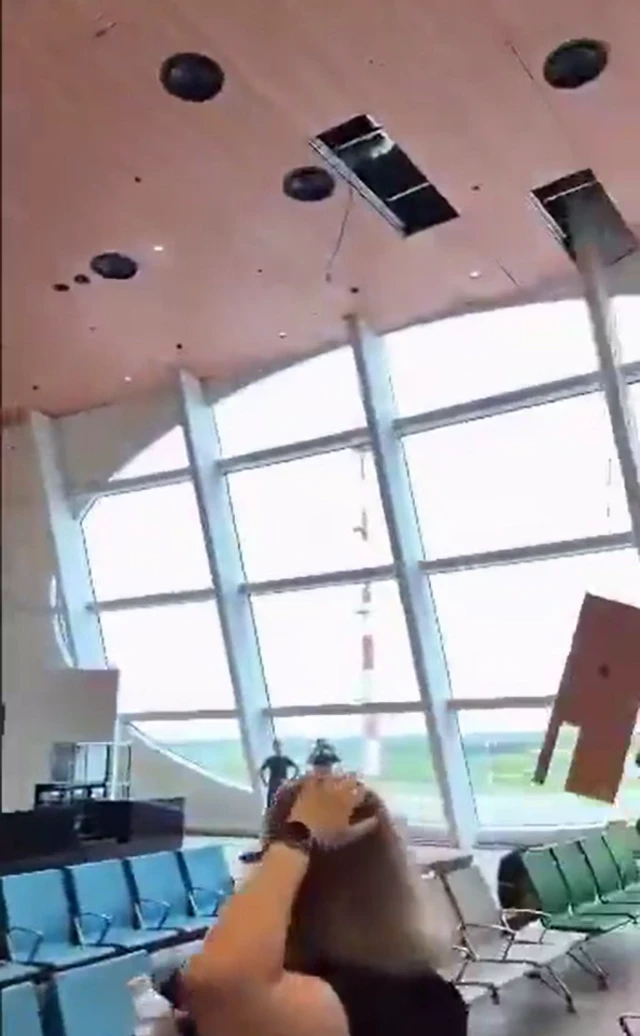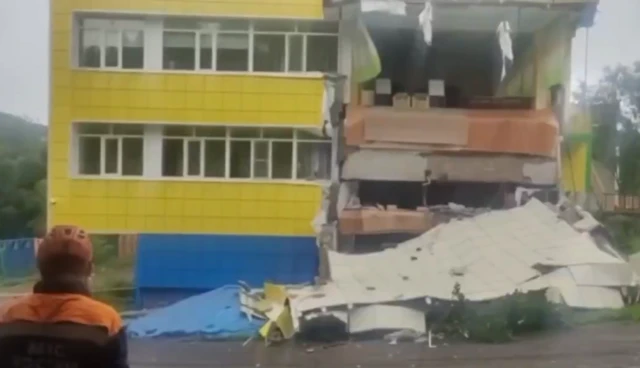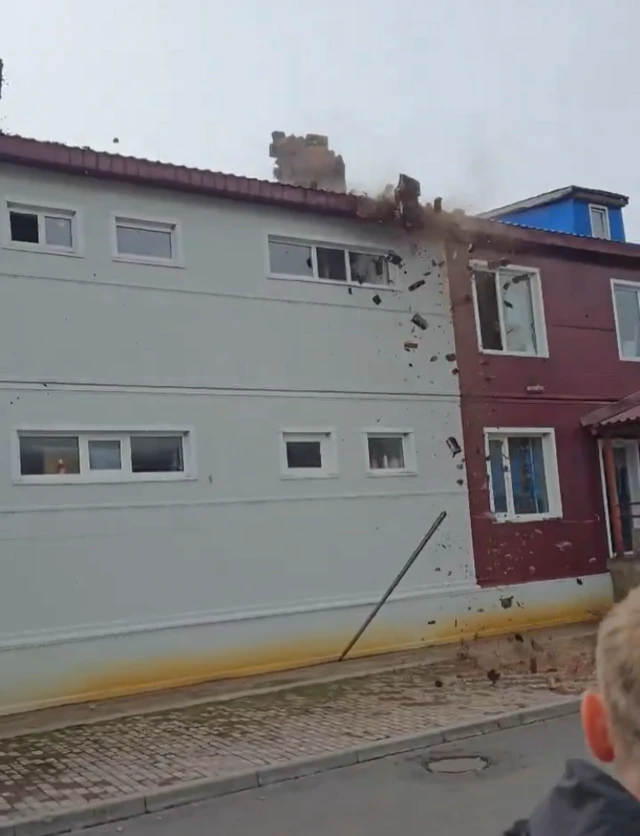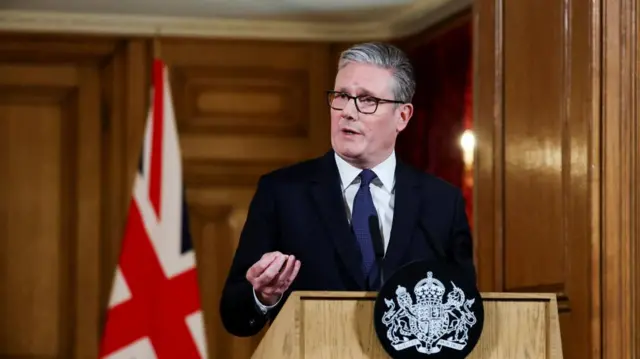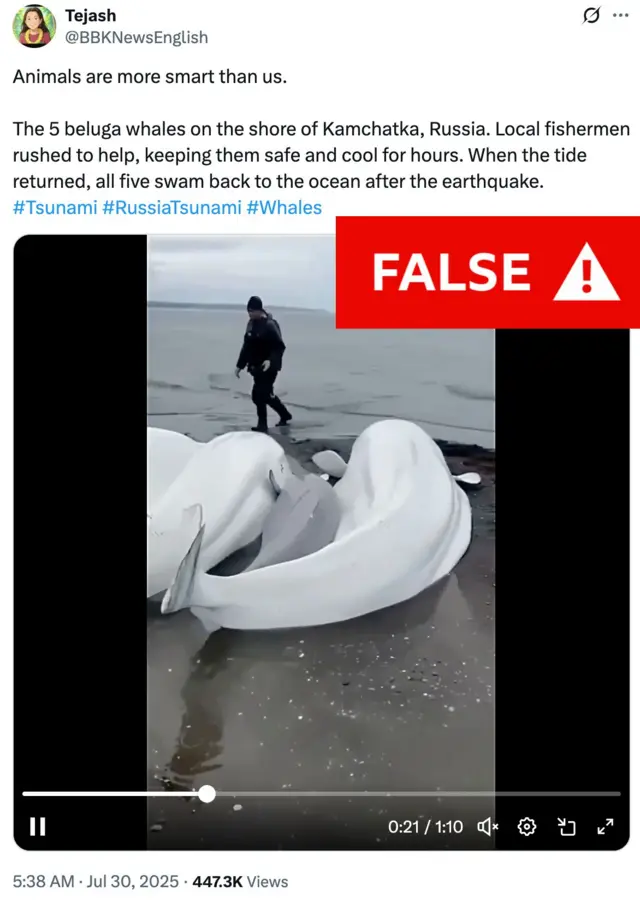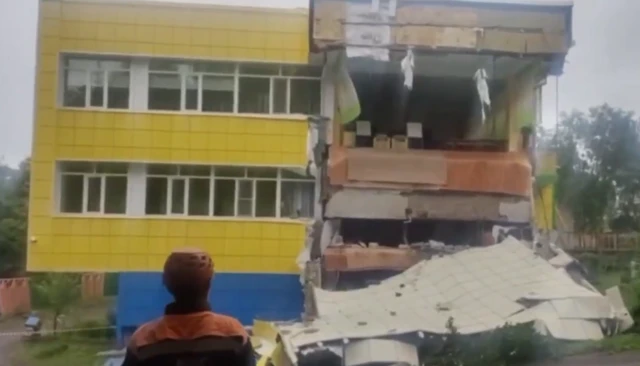Wednesday on BBC Verify Livepublished at 17:20 BST 30 July
 Anthony Reuben
Anthony Reuben
BBC Verify senior journalist
We’ll be closing our live page shortly, but the the work of our verification team continues.
For most of today, our focus was on the damage caused by the earthquake off the Russian east coast. We showed how we carry out verification work to geolocate videos and images circulating online.
We also pointed out examples of viral misinformation, including an old clip of five beluga whales stranded on the shore of Kamchatka, close to the epicentre of the quake.
Elsewhere, we spoke to aid agencies and Israeli officials about what’s been holding up aid at the Gaza border.
This evening, our team is shifting its focus to the air traffic control , external“technical, external issue” that’s affected all outbound flights in the UK, external.
Our journalists will be tracking how the UK clears the backlog of flights. We’ll also be reaching out to passengers affected by the delays.
Overnight we’ll be publishing a piece online about how tariffs are affecting US consumers.
Verify Live will be back on Thursday.




